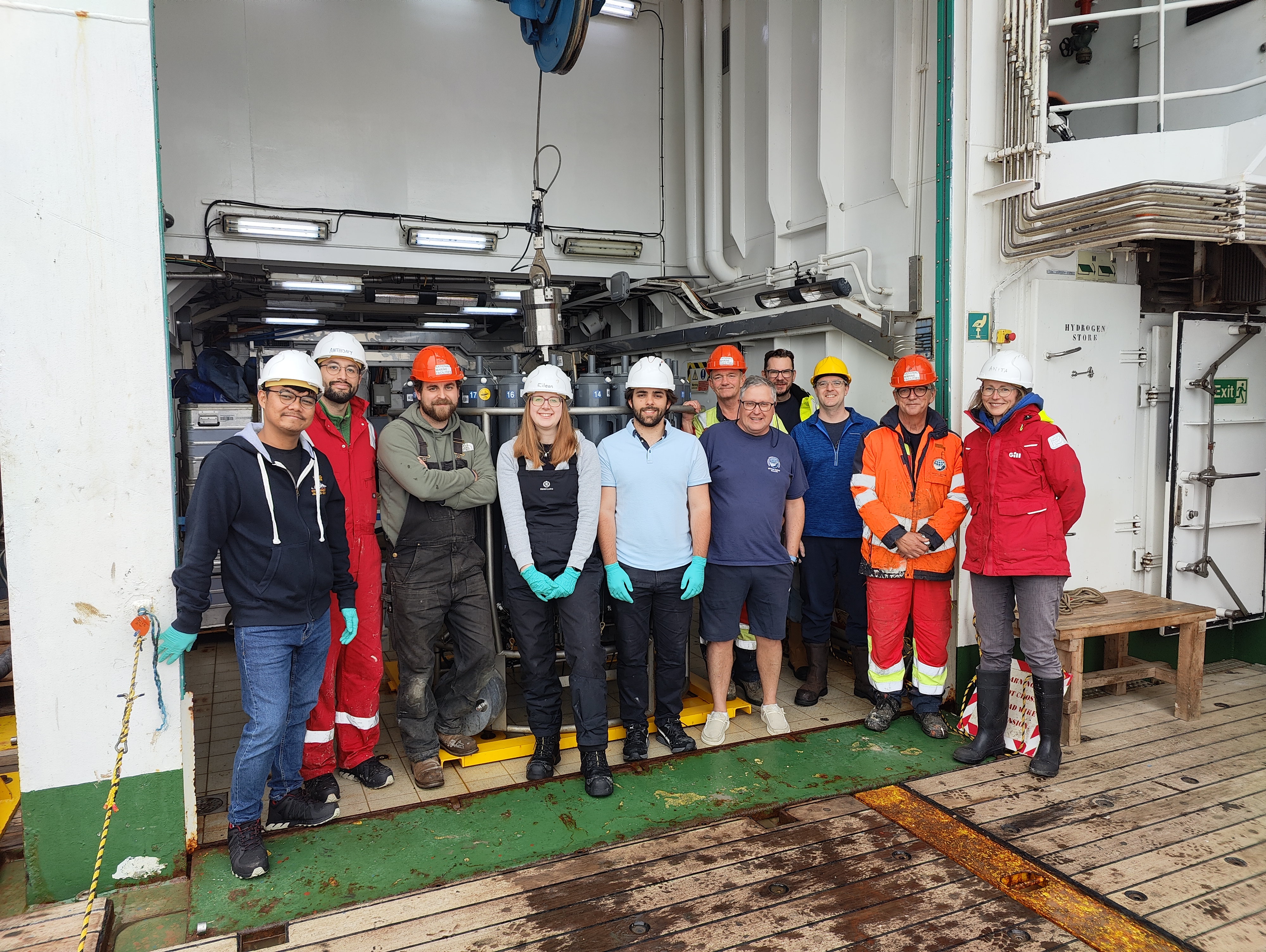What’s going on with Whittard?
By Eilean MacDonald
Hi! I’m Eilean and I am a PhD researcher at the University of East Anglia. My research focuses on turbidity within the Whittard Canyon system, and this year during the JC263 expedition, as we passed by this system on our way to the Porcupine Abyssal Plain, we managed to spend a few days collecting valuable data in this area too. My blog post will give you a whistle stop tour into the world of submarine canyons!

So, what are submarine canyons?
Submarine canyons are ocean features found all around the world. They are steep sided valleys that incise our continental shelves, in doing so creating a link between our shallower shelf seas (~200 m) and the deep ocean (~4000-5000 m). They locally steer ocean currents, bury carbon, enhance primary productivity and are efficient conduits for nutrient and sediment transport into deeper waters.
There are two main types of submarine canyons: land attached and land detached. The main difference is their location in relation to land. Land attached canyons sit close to the coast and are influenced by coastal and riverine processes. Conversely, as land detached canyons are further from the coast they are not affected by these processes, meaning they should be less active in terms of turbidity currents.
But what is a turbidity current and why do we care about them? Turbidity currents are sediment-laden flows that rapidly move down a slope, simultaneously transporting nutrients, organic carbon and pollutants. They are important because they have a role in organic carbon transport and burial, which means they are also involved with the regulation of the climate on geological timescales.
Why is Whittard Canyon so special?
Whittard Canyon is a submarine canyon about 400 km southwest of the coast of Ireland. It is a land detached canyon because it sits so far away from land which means it shouldn’t be active with turbidity currents…right?.....Wrong!
This canyon is surprisingly active seeing big turbidity currents come through the canyon roughly six times a year with speeds 5 - 8 m s-1, similar to what we would expect in a land attached canyon [1]. The causes of these turbidity currents are currently unknown, so as scientists we are working to figure out possible triggers for these events. It could have implications for ocean models and carbon burial estimates, especially if other ‘inactive’ canyons turn out to be active too!
During JC263 we carried out 5 CTD (conductivity, temperature, depth) casts which are to be added to a CTD archive I am building with those from other cruises, to better understand background turbidity in the canyon. The data from these CTDs allows us to understand what may control turbidity within the canyon and how these may affect turbidity current events. Some of these CTD casts filled in some gaps in the spatial distribution of my CTD archive whilst others revisited sites we have been to previously.

Well, it looked a bit like Pea Soup…
There is a location within Whittard Canyon that has been nicknamed ‘Pea Soup’ due to its reputation of having lots of sediment in the water column close to the seabed. We visited this site again on JC263 to see what was happening this time around. The site has been visited 8 times over a number of years, and each time the turbid layer has been different in intensity and thickness. This year however it was much, much, MUCH more intense that I was expecting, and I am not sure yet why; that is a question that future me will hopefully be figuring out!
I would like to finish by saying a big thank you to the amazing science team and crew aboard the RRS James Cook who filled my first cruise with amazing memories and great science!

Acknowledgements
I would like to acknowledge my institutions and funding bodies, The University of East Anglia, ARIES DTP, Centre for Ocean and Atmospheric Science UEA, AtlantiS, National Oceanography Centre.
Links:
[1] https://www.nature.com/articles/s41467-022-31114-9